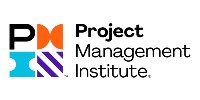How Digital Information Transforms Project Delivery Models

Digital information is everywhere. It is shareable, accessible remotely, searchable, and updateable. This is transforming project delivery models—but how? I find that digital information plays an increasingly central role by changing and making new connections across these aspects of project delivery: (1) project deliverables; (2) supply-chain interactions; and (3) relationships with owners, operators, and end users. Three generations of project delivery models are characterized, with a shift from integrated solutions to digitally supported integrated solutions and digitally integrated solutions. It is argued that digital information makes new collaborative project delivery models more viable.

Method Summary
To build new theoretical understanding, the article uses data from a study of the evolving digital innovation ecosystem in London from 2004 through 2018, with a focus on the links between industry/government initiatives and infrastructure megaprojects.
Key Findings
• The challenge of thinking into the future is a concern for project managers in all of the megaprojects studied, as they seek to address the rapid rate of digital innovation and project delivery.
• Digital information has been used with the ambition to foster collaboration, deliver structured asset information, and better consider project outcomes.
• The digital innovation ecosystem in London connects infrastructure megaprojects with thought leadership to inform the development of new digitally enabled project delivery models.
• There are growing volume, complexity, and convergence of the heterogeneous set of digital information used across the megaprojects studied.
• Digitally supported integrated solutions arise as digital information becomes a deliverable and as it becomes mobilized for systems integration, with real-time monitoring of suppliers and greater integration between delivery and operations.
• There are indications of a further transition to digitally integrated solutions in which the project deliverables involve a digital twin, where there are supplier visibility and integration with use as well as operations and delivery.
• Digital information makes new collaborative project delivery models more viable. In the transfer of digital information as a deliverable from the project into operations, alternative new models are centered on the (1) owner–operator, (2) pop-up client, and (3) integrated pop-up client.
• The findings suggest a fundamental shift in the nature of organizing, away from the documents that are central to bureaucracy, to new ways of constituting the task infrastructure of projects through structured digital information, workflows, datasets, and analytics.
Practical Implications
• Project managers should consider the use of digital information in developing project delivery models.
• Project managers can engage with a wider digital innovation ecosystem to inform the development of new digitally enabled project delivery models and manage the high rate of innovation.
• Digital information changes the basis for competition between firms in project-based industries as it leads to greater integration across the supply chain and with owners, operators, and end users.
Overall Takeaway
This study articulates, for the first time, how increasingly pervasive digital information is transforming project delivery models. As the computational devices used in all aspects of project delivery are becoming progressively smaller and cheaper, digital information is changing what projects deliver, with information becoming itself a deliverable.
For further information on this and similar projects, please contact Jennifer Whyte at
Jennifer.whyte@sydney.edu.au
For the full article, go to: https://journals.sagepub.com/doi/full/10.1177/8756972818823304



























































































